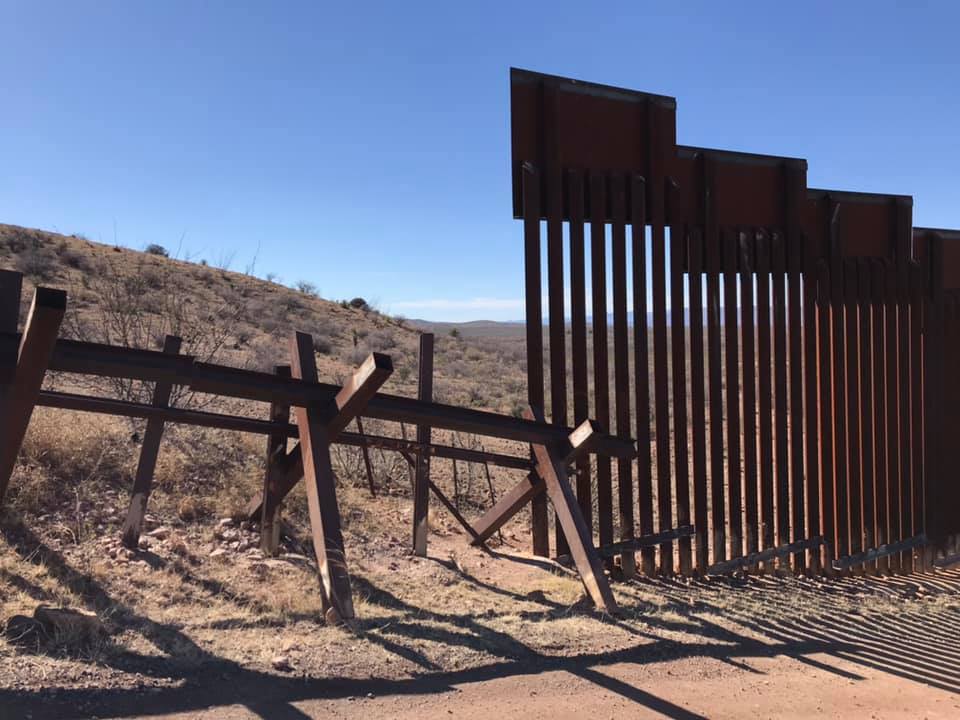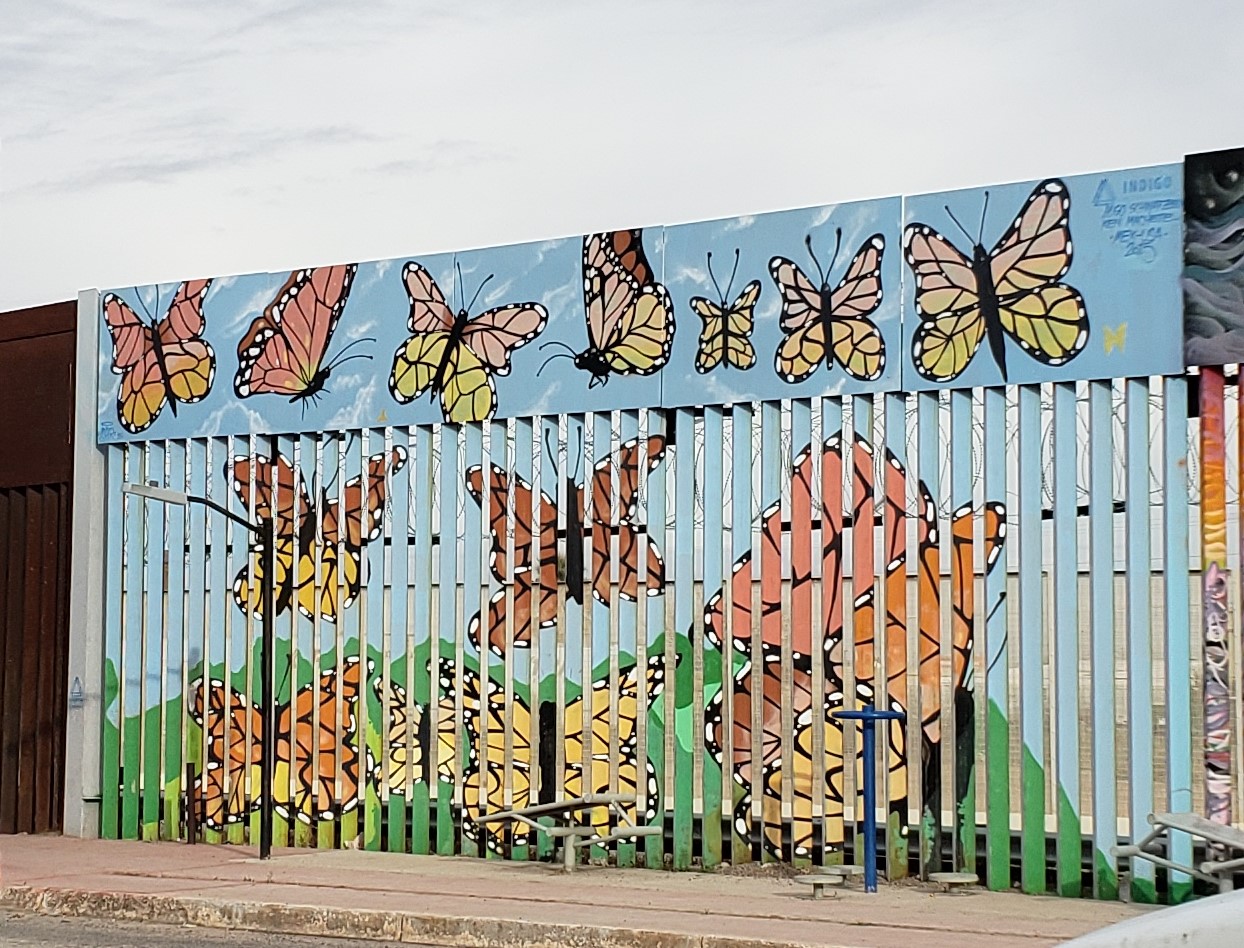
by Peggy Gish
Walls take many forms. They may be words, glances, or actions that distance us from others, or physical structures that protect us from the weather or the vulnerable from further harm. But the walls we saw at the Arizona/Mexico border, on the Christian Peacemaker Teams borderlands delegation, were made of concrete, metal, or stone, or even from threats, meant to deprive people of their rights or shut out the tired, the poor, the “huddled masses yearning to breathe free”—as the message on the Statue of Liberty says at a port of entry in the Eastern United States.
There were walls made of steel slats decked with concertina wire. In some places it ran parallel to a second wall of layered metal mesh. In areas where water floods through arroyos during monsoon rains, large iron gates let the water flow through. Farther from towns were the original barbed wire fences constructed in 1880, with added razor wire, that sometimes crossed over with old railroad rails, called the “Normandy fences.” All are fortified by heavy technological surveillance.
Ostensibly a means of security, these barriers are actually monuments to fear and racism, and an extension of U.S. colonial history, a reminder that the U.S. claimed half of Mexico’s territory after the 1846-48 war. They have been tools of control, keeping people of color in an inferior place and maintaining white supremacy. They cut through the lands of indigenous nations—violating their sovereignty and disrupting communities and ecosystems. Billions of tax dollars go to wealthy, private companies that build walls and run detention centers. Maria Padilla, member of the Mayo indigenous nation, and emergency room worker, reminded us that the nation-state operates as a police force on behalf of the rich—who have no border—while patriotism is expected of poor and working class, who are led to believe it’s for their benefit.
The border wall isn’t intended to keep migrants out, only slow them down, to catch and detain them. With the increased militarization of the border area, migrants who feel desperate, but can’t cross legally, need to travel farther, into more dangerous areas to bypass detention. So they die in larger numbers, suffer more trauma, and are locked up in larger numbers for the crime of escaping desperate circumstances. Lupe Castillo, retired history professor with indigenous Hispanic heritage, termed this criminalization system “the invisible wall.”
These are walls to tear down.
In contrast are the many creative organizations and dedicated people along both sides of the border protesting and resisting the affects of the wall that sometimes risk their own safety by caring for and assisting migrants on their journey. Several cooperative businesses are creating alternatives to the economic deprivation and oppression that cause many to flee their homes.

Also resisting the wall are brightly painted murals on it near ports of entry. They tell the truth about the wall, or “erase” it, minimizing its power, refusing to let its ugliness define what role the border should take. So butterflies depict the freedom of flight migrants should have, wall slats evolve into piano keys, and a painted open door symbolizes the alterative we must work toward.
Members of our delegation left the border feeling an urgency to tell the truth and find creative alternatives as we work toward a more just, welcoming, and less brutal society that builds—not more militarized walls—but more doors.



